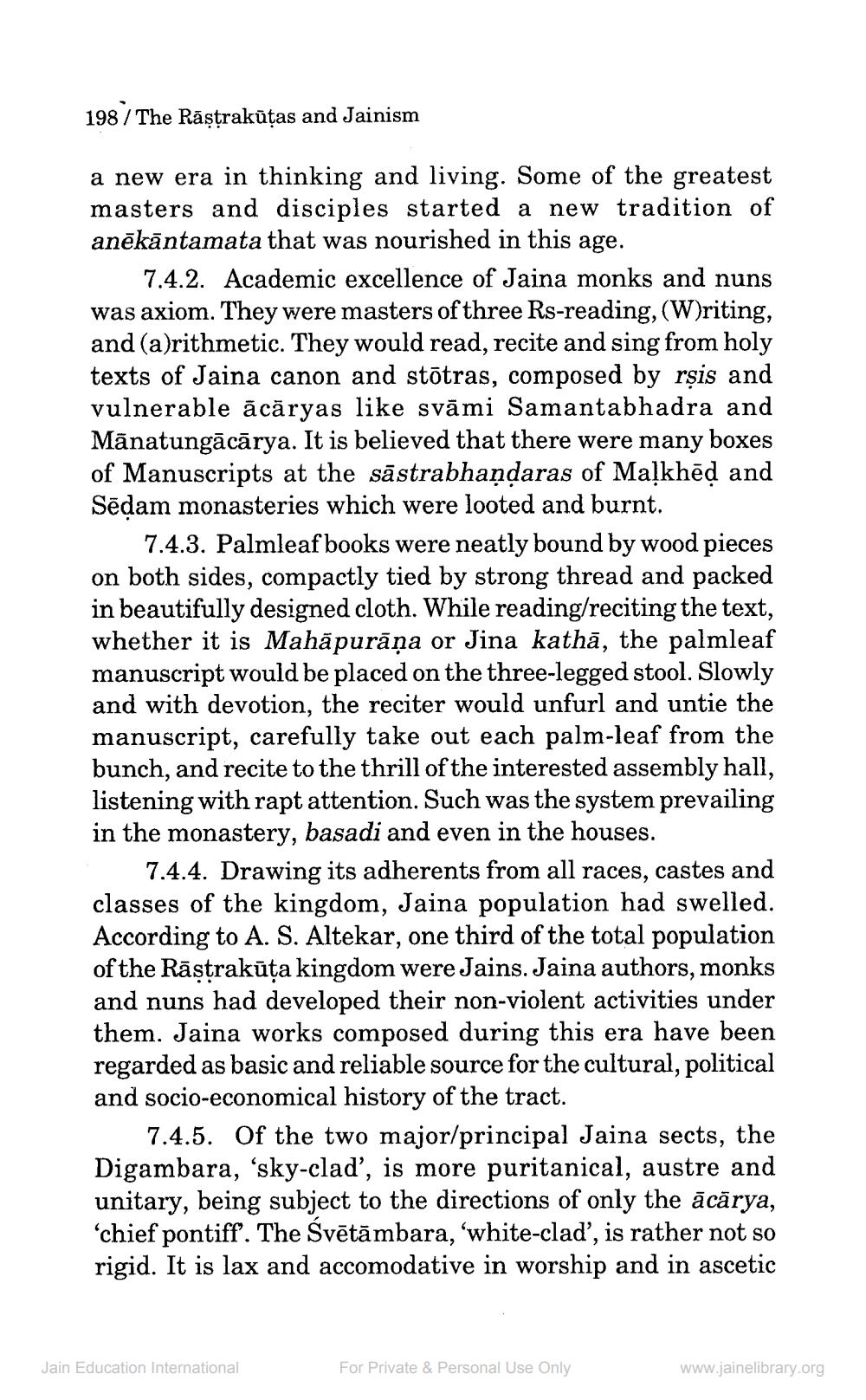________________
1987 The Rāstrakūtas and Jainism
a new era in thinking and living. Some of the greatest masters and disciples started a new tradition of anēkāntamata that was nourished in this age.
7.4.2. Academic excellence of Jaina monks and nuns was axiom. They were masters of three Rs-reading, (W)riting, and (a)rithmetic. They would read, recite and sing from holy texts of Jaina canon and stötras, composed by rșis and vulnerable ācāryas like svāmi Samantabhadra and Mānatungācārya. It is believed that there were many boxes of Manuscripts at the sāstrabhandaras of Malkhēd and Sēdam monasteries which were looted and burnt.
7.4.3. Palmleaf books were neatly bound by wood pieces on both sides, compactly tied by strong thread and packed in beautifully designed cloth. While reading/reciting the text, whether it is Mahāpurāņa or Jina kathā, the palmleaf manuscript would be placed on the three-legged stool. Slowly and with devotion, the reciter would unfurl and untie the manuscript, carefully take out each palm-leaf from the bunch, and recite to the thrill of the interested assembly hall, listening with rapt attention. Such was the system prevailing in the monastery, basadi and even in the houses.
7.4.4. Drawing its adherents from all races, castes and classes of the kingdom, Jaina population had swelled. According to A. S. Altekar, one third of the total population of the Rāstrakūta kingdom were Jains. Jaina authors, monks and nuns had developed their non-violent activities under them. Jaina works composed during this era have been regarded as basic and reliable source for the cultural, political and socio-economical history of the tract.
7.4.5. Of the two major/principal Jaina sects, the Digambara, ‘sky-clad', is more puritanical, austre and unitary, being subject to the directions of only the ācārya, 'chief pontiff". The Svētāmbara, 'white-clad', is rather not so rigid. It is lax and accomodative in worship and in ascetic
Jain Education International
For Private & Personal Use Only
www.jainelibrary.org




